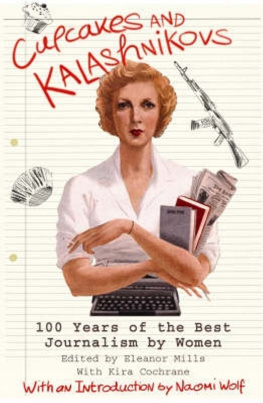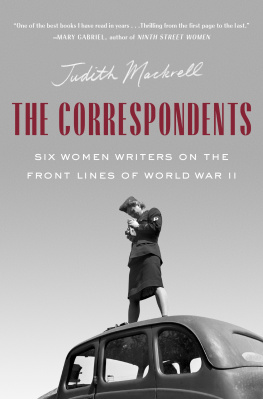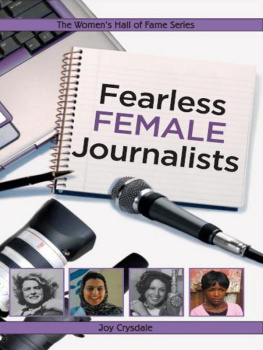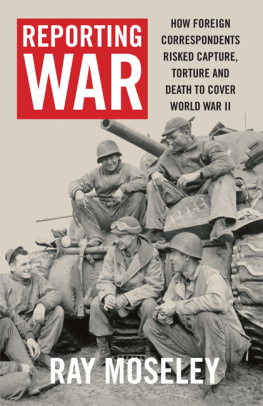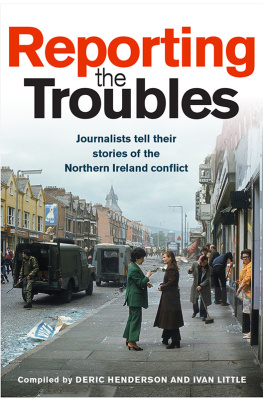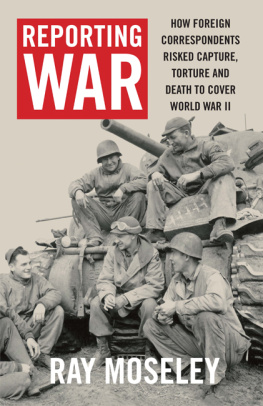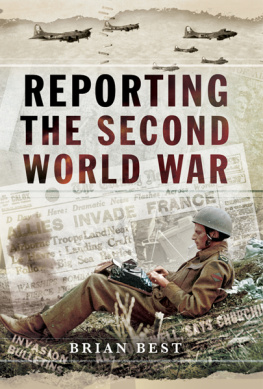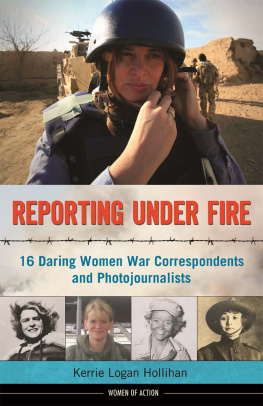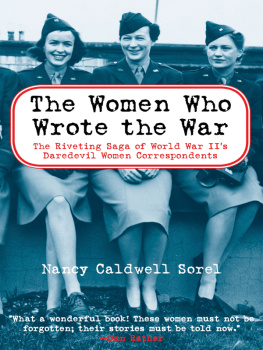ABOUT THE EDITORS
ELEANOR MILLS is the editor of the News Review section of the Sunday Times, the UKs most popular broadsheet. She was born in London and was educated at St Pauls and Westminster schools before reading English at Oxford. She trained to be a journalist on the Observer where she was the only woman trainee in the newsroom. She then moved to the Daily Telegraph where she became the youngest features editor in the papers history. She joined the Sunday Times in 1998 where she did the papers main interview every week for two years and is now its most senior female editor. Aged thirty-four, she lives in London with her husband and two children.
KIRA COCHRANE was born in 1977 and studied American Literature at the Universities of Sussex and California before starting work as a writer/researcher on the Sunday Timess News Review section in 2000. She left in 2003 to concentrate on writing fiction and has since produced two novels: The Naked Season (2003) and Escape Routes for Beginners (2004), which was longlisted for the 2005 Orange Prize.
CUPCAKES AND KALASHNIKOVS
100 Years of the Best Journalism
by Women
EDITED BY
ELEANOR MILLS WITH KIRA COCHRANE
CONSTABLE LONDON
Constable & Robinson Ltd
55-56 Russell Square
London WC1B 4HP
www.constablerobinson.com
First published by Constable,
an imprint of Constable & Robinson Ltd 2005
Collection and editorial material copyright Eleanor Mills and Kira Cochrane 2005
All rights reserved. This book is sold subject to the condition that it shall not, by way of trade or otherwise, be lent, re-sold, hired out or otherwise circulated in any form of binding or cover other than that in which it is published and without a similar condition including this condition being imposed on the subsequent purchaser.
A copy of the British Library Cataloguing in
Publication Data is available from the British Library
ISBN 1-84529-165-4
eISBN 978-1-78033-707-4
Printed and bound in the EU
1 3 5 7 9 10 8 6 4 2
For my daughters Alice Lily and Laura
CONTENTS
ACKNOWLEDGEMENTS
My biggest thanks must go to Kira Cochrane who has spent exhaustive hours rummaging through stacks in all sorts of libraries to dig out many of these articles. There would be no collection without her brilliant research and nose for a top story, she is the best right-hand woman any editor could ever have. I must also thank my editor John Witherow at the Sunday Times for letting me edit this book and for his support and encouragement of my career. And my own mentor, Sarah Baxter, former editor of the News Review at the paper and now one of the first female Washington correspondents, for all her insights and belief; she is an inspiration.
I have been very encouraged by the enthusiasm, suggestions and knowledge of a range of wise women while putting together this book and during my journalistic career: Julia Langdon, Melanie Phillips, Lynn Barber, Rosie Boycott, Suzanne Moore, Gillian Tindall, India Knight, Margarette Driscoll, Lesley White, Christina Lamb, Gitta Sereny, Erin Pizzey, Ann Leslie, Rebecca Nicolson, Sarah Sands, Zadie Smith, Jilly Cooper, Georgia Garratt, Erica Jong, Tiffanie Darke and Kath Viner. And of course I am very grateful to Naomi Wolf for her unflagging encouragement and total belief in the worth of the project and for writing the introduction her support has been invaluable.
I must also thank my team at the Sunday Times: Julia Margo, Giles Hattersley and Glenda Cooper particularly, but also Richard Bonfield in News International syndication. And thanks to Becky Hardie at Constable for being such a wise, kind and understanding editor.
Lastly I must pay tribute to my wonderful husband Derek who has put up with me rustling papers late at night with great stoicism and has been, as ever, my rock; and to my daughter Alice Lily for letting mummy send boring emails when I should have been reading stories; and finally to the bump for being well behaved enough to delay its arrival until this anthology was finished.
FOREWORD
Most of the worlds great newspapers were established in the middle of the nineteenth century or even before. In America the New York Times was established in 1861, in Britain The Times started to thunder in 1785 with the Observer and Sunday Times and even the tabloids such as the News of the World and the People coming on stream by 1881. A century ago, many of the titles which are familiar to readers from news stands today were up and running, including many of the periodicals. The golden age of journalism in many respects is seen to be between about 1880 and 1910 when newspapers really had a stranglehold on the news market and the technology to make their grip count.
But since then newspapers have undergone a rather different kind of revolution. What has changed dramatically in the last 100 years is the inclusion of womens voices. They are still not as widespread as they should be (a recent survey by the Center for Media Literacy in the US discovered that female bylines on the front pages averaged only 27 per cent of the stories there); but that is still nearly a third of all front page stories: a massive change in how things used to be.
I remember when I first became editor of the News Review section of the Sunday Times in London in 2001 having lunch with Godfrey Smith (the man who invented the first magazine supplement within a newspaper), who had worked for the paper for sixty years. When I first started, he said, there was only one lady journalist on the staff: the womans editor. She used to sweep in on Thursdays to conference, tell us what she was going to write always dresses, or childrens behaviour, and then disappear. We were absolutely terrified of her. Amazing how things change.
Ever since then Ive been fascinated by how women made their way into newspapers and by the history of the women particularly writers who came before me. Despite the millions of articles written by women all over the world, there is no anthology of the best of their contributions. I hope this volume will remedy that and bring some of their writing to a wider audience.
Of course, there are all sorts of journalism anthologies out there, but mostly from particular publications, so you get for instance the best of the American Vogue or Cosmopolitan, but nothing that gives the general reader an overview of the incredibly diverse journalism that women have been producing for over a century.
No single volume could do justice to this vast amount of material: but what I have tried to do in this book is to bring together some of the very greats the must know abouts, if you like, such as Martha Gellhorn or Rebecca West, whose reporting stands proud in any company with some more obscure pieces which illustrate aspects of the female experience which still resonate today.
How does one define journalism? The basic criteria for inclusion: the piece of writing should have been written for and first published in a newspaper or magazine. I wanted to reflect all the different sorts of articles in newspapers, so the anthology contains everything from first-hand accounts of battles, or events (such as Martha Gellhorn describing the horrors of Dachau or Ann Leslie witnessing the fall of the Berlin Wall) to book and film reviews, comment pieces, interviews, pamphlets, fiction (Bridget Jones began in a newspaper as a fictional diary about a singletons life) and more personal features. Although women can report objectively as well as any man, what women have really brought to newspapers is a more confessional, intimate voice. The strong voices of clever women warming to their themes and giving up details of their own lives and experiences in order to do so, comes across very clearly in this book. I am proud to have included such groundbreaking articles as Ruth Picardies column written as she was dying of cancer, which spawned a whole subspecies of confessionals in imitation.
Next page
